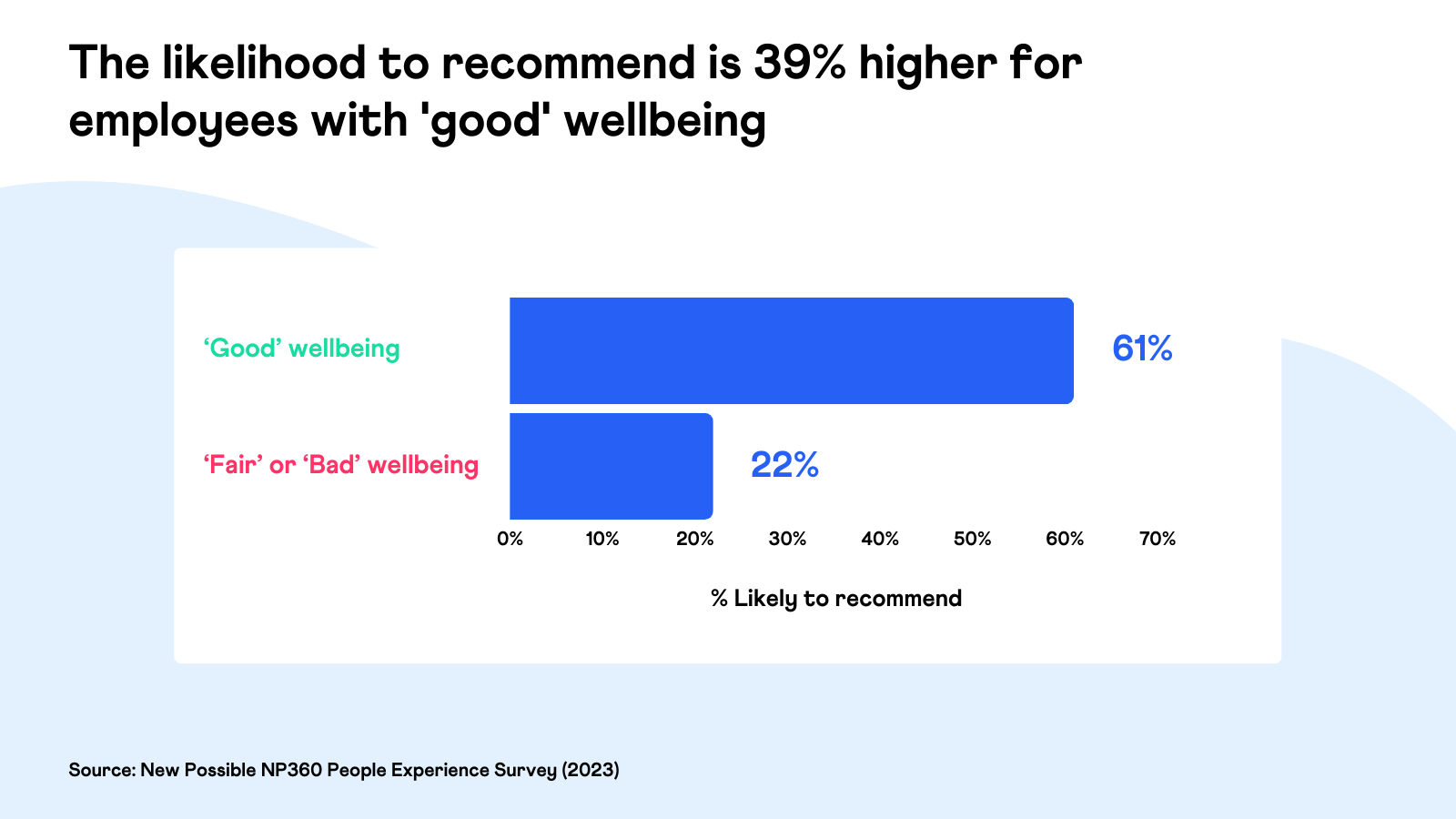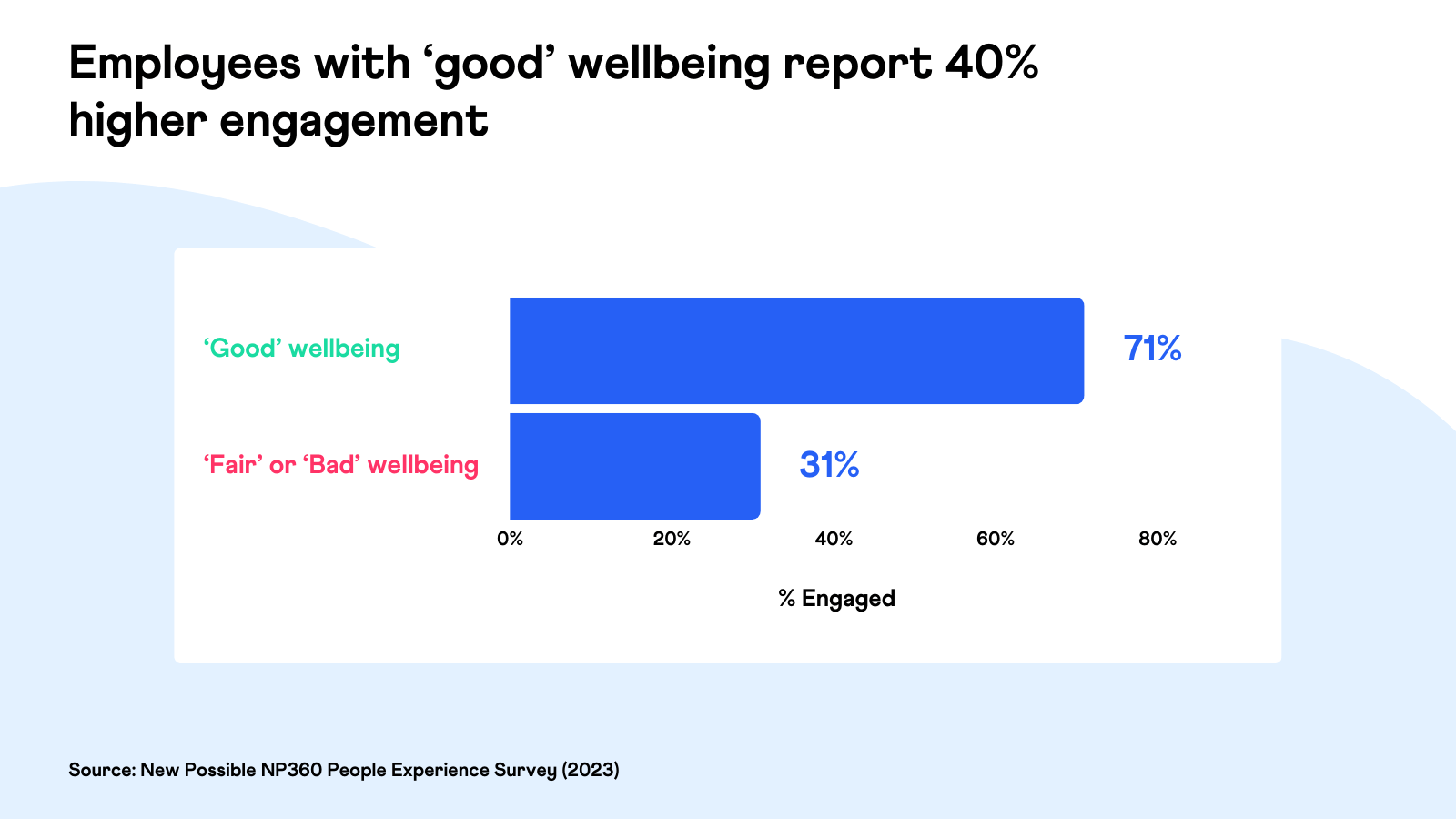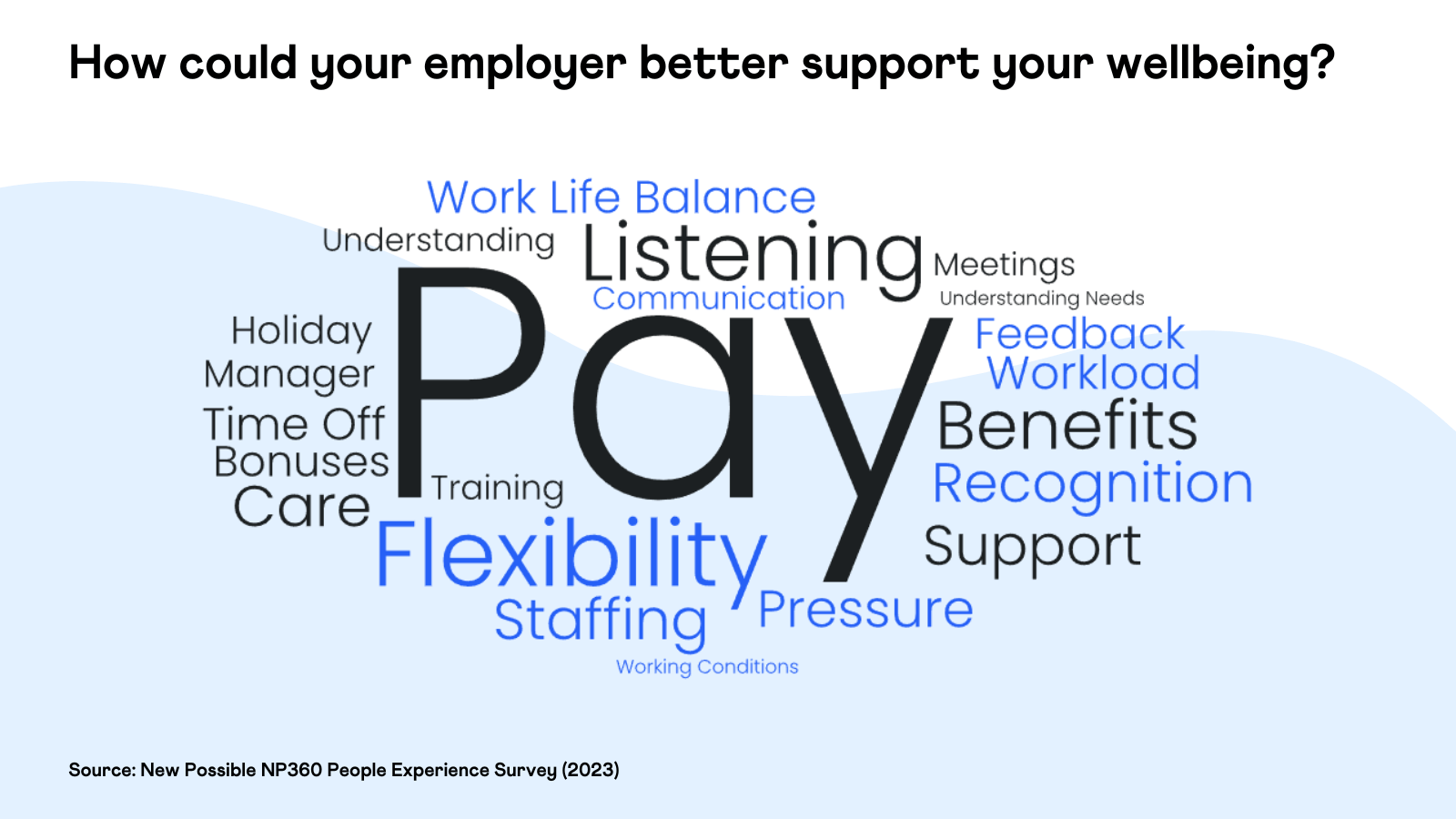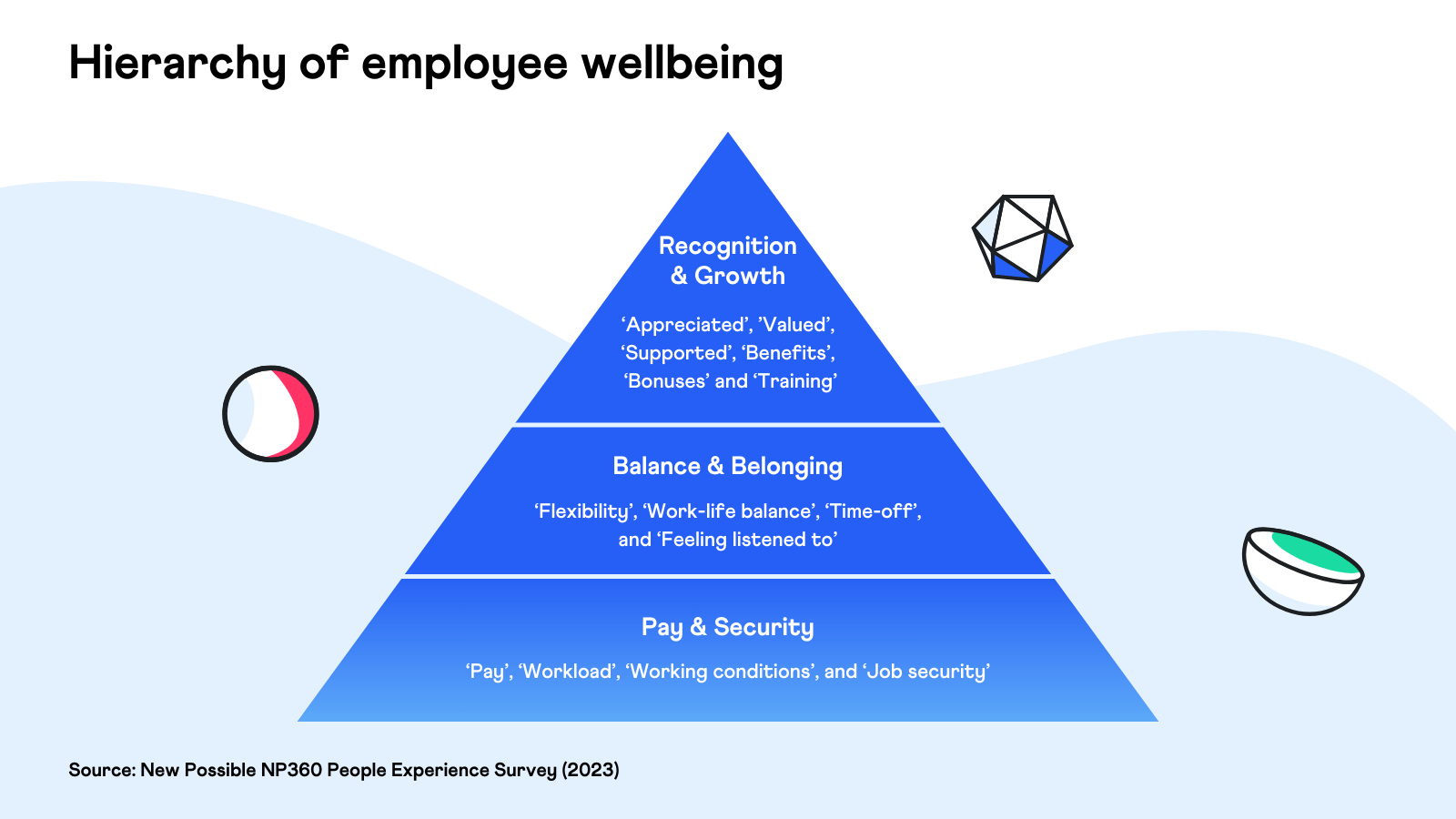By Ava Kaveh, Graduate Data & Insight Analyst at New Possible
In our latest 'What Workers Want' survey, 32% of employees reported a decline in their wellbeing over the past year, compared to just 14% who noted an improvement. This alarming trend is having significant implications; with 2023 research by the CIPD finding that sickness absence is now at its highest level in a decade, averaging 7.8 days per employee, per year.
Factors such as the cost-of-living crisis, burgeoning NHS waitlists, and the lingering effects of the pandemic have exacerbated this issue. Given these challenges, it's perhaps unsurprising that 69% of senior leaders have now prioritised wellbeing on their agendas.
Drawing on responses from our NP360 people experience survey over the last 12 months, this article explores the relationship between employee wellbeing and factors such as job satisfaction, engagement, and work-life balance. We also reveal the top ways employees believe their wellbeing could be better supported.
How we measure wellbeing
Although awareness around wellbeing has increased over recent years, many of us are still reluctant to talk openly about it, particularly when it comes to mental health. It can also be difficult to articulate and measure, making wellbeing a challenging theme for leaders to accurately assess.
Our benchmarkable NP360 assessment uses validated approaches to measure wellbeing, including the World Health Organisation-5 Wellbeing Index (WHO-5). We also ask employees to rate their wellbeing in general, from ‘very bad’ to ‘very good’, which helps provide a broader mental and physical assessment of wellbeing, the responses to which we’ll explore in this article.
To encourage honest responses, New Possible ensures that individual employee feedback remains anonymous.
The likelihood to recommend is 39% higher for employees with 'good' wellbeing
We begin by examining the relationship between wellbeing and the employee Net Promoter Score (eNPS), a measure of loyalty and satisfaction. This is calculated by asking: ‘On a scale of 0-10, how likely are you to recommend your organisation as a place to work?’. Based on their score, employees are categorised as:
- 9-10: Promoters: Happy and motivated enough to actively recommend.
- 7-8: Passives: Mostly satisfied but not enthusiastic enough to recommend.
- 0-6: Detractors: Dissatisfied and unlikely to recommend.

Our findings reveal a significant link between general wellbeing and eNPS. 61% of people who report good wellbeing are also promoters, compared to just 22% of those with ‘fair’ or ‘bad’ wellbeing. This suggests employees who report good wellbeing are much more likely to recommend their workplace.
Employees with ‘good’ wellbeing report 40% higher engagement
Within NP360, we also examine engagement levels using the UWES-3 question set to measure how energised, enthusiastic, and absorbed employees are by their work:
- “At work, I feel bursting with energy.”
- “I am enthusiastic about my job.”
- “I am immersed in my job.”

Our findings indicate that employees who describe their wellbeing as ‘good’ are significantly more engaged, with 71% on average reporting being ‘often’ or ‘always’ engaged, compared to 31% of employees with ‘fair’ or ‘bad’ wellbeing.
How can employers better support wellbeing?
In this section, we delve into responses to ‘How could your employer better support your wellbeing?’ with a focus on feedback from employees who rate their wellbeing as 'fair' or ‘bad’. We begin by analysing the words and phrases mentioned most frequently.

Inspired by Maslow's framework, we’ve organised suggestions based on their frequency and impact. At the initial level, pay and security such as fair compensation and job stability are crucial for encouraging good employee wellbeing, especially in light of the current cost of living crisis. The next tier focuses on balance and belonging, advocating for increased flexibility, a healthy work-life balance and respect. To achieve the top tier, growth and recognition, employees seek to feel ‘valued’ and ‘supported’, in addition to opportunities for personal development.

Further exploring the relationship between work-life balance and wellbeing, we find that 86% of employees who are satisfied with their work-life balance also rate their wellbeing as ‘good,’ compared to just 30% who are dissatisfied.
In summary, fostering a culture that champions wellbeing can lead to a more satisfied and engaged workforce. Research by Deloitte underscores a compelling return on investment: for every £1 spent on wellbeing, businesses see a £5 return through reduced presenteeism, absenteeism, and staff turnover, presenting both a moral and significant financial incentive for organisations to invest in their employees' wellbeing.
Our comprehensive NP360 survey enables you to measure both general and mental wellbeing across your workforce and continually collect feedback so that you can monitor trends. Its holistic approach also helps you identify root causes and assess the impact of wellbeing on other areas of the people experience.
About New Possible
New Possible is the people insight platform that’s committed to your success. We work with a range of sectors to provide clear, actionable, and benchmarkable insights across the employee lifecycle. Our NP360 survey helps leaders gain meaningful insight into the broader people experience, measuring 7 themes, including satisfaction, culture, and wellbeing. Read about our mission or book a demo to learn more.
If you’d like to discuss this research further, please email hello@newpossible.io or call 0161 706 0618.

